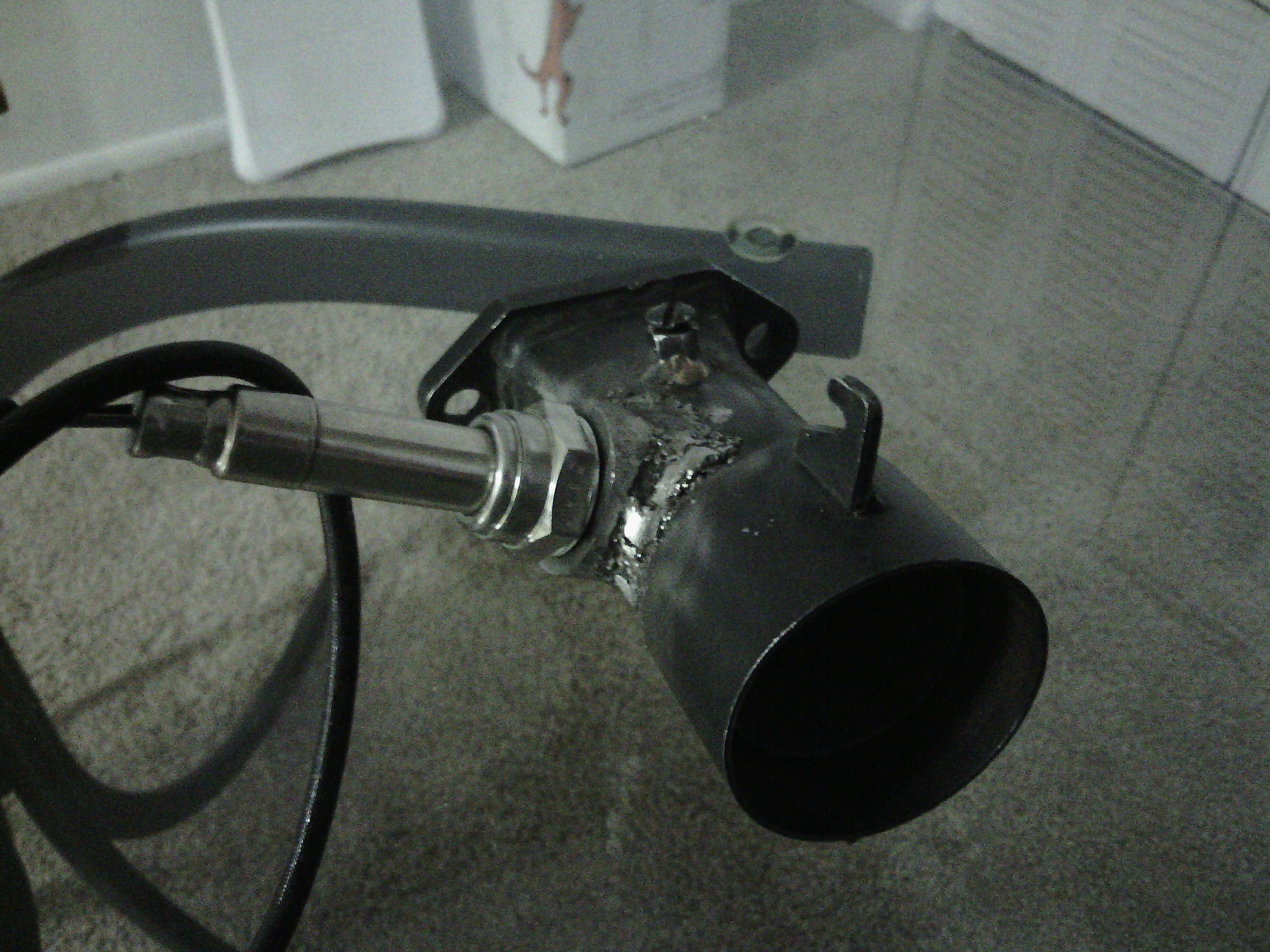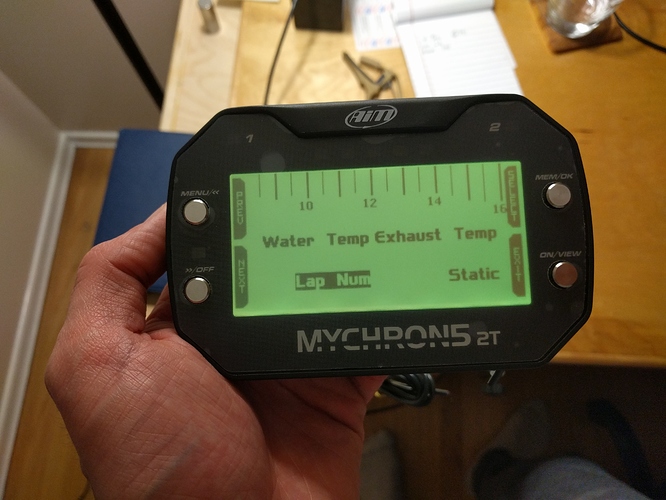So I’ve read in a few places that some karters user lambda sensors when using their karting data. However, I’ve never seen one in use. Does anyone know of anyone who measures lambda and what it might be used for?
I’ve used it a lot.
-Had a narrowband (rich/ideal/lean) gauge hooked up to the steering of my nitro-powered KPV to monitor mixture.
-My K30 has a lambda port on the header for monitoring mixture for when I had the twin carbs first installed and had to figure out needle adjustments.
Do you know somewhere I could read about how to read lambda? It’s something I don’t know too much about, but would like to learn more.
Davin, wouldn’t Roger Caddel at AIM be a good place to start? AIM makes Lambda probes for EGT and a couple others if you want to get really into it IIRC.
(Acts like I haven’t started there :-P) Hahah jk
I also wanted to get some input from people on the forums…since, we have forums  lol
lol
But it is a good idea.
I use a “supa tuner” made by a guy here in Australia. There are other commercially made products available here, but I like this one the best.
http://www.supa-tuna.com.au
It’s a pretty dodgy site but the user manual has a heap of info in it that I found quite good.
The Supa Tuner is pretty much a narrow band gauge, and in all honestly, an excellent product!
Davin, narrow bands will tell you if it’s rich, ideal, or lean, pretty self explanatory. You want to take your reading at full throttle and a long straight. Then just adjust your high jet as necessary. It won’t do much for tuning the bottom end.
Keep in mind that O2 (lambda) sensors will foul after a few runs and become inaccurate. So use it to tune the kart, then cap off the O2 port and run without it.
The system I’ve built was super simple and easy to make. A 9V battery fed power to the narrow band gauge. The O2 sensor was a two wire sensor, just wired it up to the circuit and off you go. Worked perfect.
When I have a chance (and if there is interest) I’ll share pictures and a circuit diagram.
Also, you have to weld in an O2 sensor bung on your exhaust header, so the sensor rests at a 45 degree angle from the horizontal. Here’s a picture, it was my first welding job EVER.

This surprises me, actually, coming from Yamaha. It’s been agreed upon for a while now that karts stay at 2 1/2 on the low end and close the high. Never needed an O2 sensor. Do other engines need such constant tuning for the carb that one would want to buy it?
I started using it with a KT 100 Yamaha, basically for peace of mind. In Oz (I feel I have to mention this every time because this is a US forum - let me know when you are sick of it! Lol) we started at 1.5 turns on the low and 1/8th on the high and would adjust the low as the race progressed and engine temps went up.
With the new KA 100 it doesn’t need constant attention, just monitoring for my peace of mind again, I mean an engine is expensive and a $300 investment to protect it sounds ok to me.
Generally the adjustment is the width of the blade and I only tune as close to optimal as I feel is safe for engine life. Others will run a lot closer to lean than I would.
I don’t rely on it, they can give false readings, and you should still keep an eye on your temp, but for a general idea of what’s happening in the engine, they are great.
David,
I have a few customers using the AiM LCU one Lambda sensor. They like it quite a bit, and it provides a more reliable piece of data to tune with than say EGT/plug/header color.
Yeah, that’s what I’ve heard that it’s a better engine tuning tool. Do you know why lambda isn’t a more popular tuning tool?
—Davin
Because it’s $400. As an AiM dealer, that’s a tough sell for many of my customers.
The ideal implementation is to send it with your motor and have your builder tune the carb on the dyno and record the lamda value. Every weekend you’re gonna be in great shape by just shooting for the same value.
@KartSmarter can you explain how the lambda sensor displays data on the AIM System? I have never seen one. There are plenty of add on systems with there own steering wheel mounted light display, I would be interested to know if it shows instantaneous readout similar to the add on systems or something you have to go digging for later off track.
In the custom display setup screens you just select the lambda value and drop it into one of the four data holes available.
Get there by pressing MENU>CONFIG PARAM>DISPLAY SETUP
Then skip to one of the custom profiles, enable it, and drop the lambda value into one of the holes (see picture below). You won’t have lambda available unless you have the LCU One connected to your MyChron 5.
@KartSmarter OK so it is a value displayed. I kind of like the simplicity of a moving light bar, but a I can appreciate also having a value to aim for as you are tuning. When the current Micron 4 dies, I will hopefully replace it with the 5.
Now, @DavinRS what value can I give to AiM so they will sponsor me one…
I’ve been running one for my HPV and KT100, with a welded bungs in a HPV4 pipe, and in the flex for the yamaha. The sensor consumes enough energy to need a full size kart battery, so not already having an onboard starter meant I had to mount a battery. Sensors seem to last just fine, I’ve only killed one wideband and that was from losing battery power. Leaded fuel would kill it, but on pump gas I don’t have issues.
It’s a helpful tool for tuning the high and low needles of the WB3A, I just check the Lambda value before and after the carb transitions to the high jet and adjust as needed. Once the needles are where I want them, I only have to make small adjustments as the day goes on.
I have a page on my MyChron with Lambda, and EGT/CHT temps. I usually target .85-.95 Lambda with peak EGT around 1100, and CHT below 400.
Haha. You’re asking the right question. ![]()
That makes a ton of sense. It’ll be hard for a karter to want to spend $400 on a sensor that they might not understand/see a ton of laptime increase from.
A narrow band O2 sensor already gives you enough info, and is only $20-$60.
Are you using one with an AiM system? Or a separate standalone gauge?
